Key Competencies Kit
for Facing Lifelong Learning


 |
This Project has been funded with support from the European Commission. This communication reflects the views only of the author, and the Commission can not be held responsible for any use which may be made of the information contained therein. |
 |
Didactic Unit 6 |
Theme |
Time |
Challenges of starting small business |
|
2 hours |
|
||
|
It is just a small business,-you can hear sometimes. In this world where big seems better, small business have developed a distorted self-image. But small business is a great business.
The role of big corporations remains immense. We need their automobiles, commercial aircraft, and a communications infrastructure. However, small business is the backbone of the economy. Sometimes we overlook the fact that huge businesses have serious weaknesses in areas where small businesses have advantages.
Small business owners learn to be risk takers and innovators. Corporate employees, on the other hand, often seek to keep their jobs.
Small business is not a synonym for small earnings. In fact, many small businesses are extremely profitable. Their advantages of flexibility, innovation, and customer focus make them into steady enterprises that earn a significant return on investment year after year after year.
|
Many want to start a business, but find that actually starting one is not easy. Some are scared of venturing, while others doubt whether they have the ability to run a business.
There appears to be two types of small business owners: people who jump right into running their business and marketing their products and services with little or no planning, and those who plan a strategy -- and a service or product design -- before they think of offering it to the public. Who is better? Difficult to say.
Before you commit your energy into your business idea, planning will provide you with valuable opportunity to think through possible scenarios, to assess risks and evaluate benefits. The time you spend on planning and working through possible alternatives, as well as the time you spend thinking about how you might reduce most serious risks, will bring rewards later on.
On the other hand, over-planning may kill initiative and leads to indecision (“Analysis Paralysis” ). Future business owners who try to foresee everything often get into the vicious circle when analysing reveals lack of facts that prevents from taking active steps.
Rushing into small business combined with knowledge allows you to be flexible, and benefit from initiative and enthusiasm.
So when quick decisions to start own small business work? Quick entering into business may be successful if your finances are in order, you’ve already got experience of working business and have access to financial recourses (can take loan, for example).
The key to success is in a combination of planning and acting
There are various reasons that prevent people from starting their own businesses, among them widely spread myths about small business . These myths are:
|
You need a good plan to put your decision to start business into practice. Before starting to draft your business you also need to review what has been achieved in this field. Your business vision is the starting point for any business planning, as it’s the core of your motivation.
A vision statement is sometimes called a picture of your business in the future but it’s so much more than that. Your vision statement is the framework for all your strategic planning. While a vision statement doesn’t tell you how you’re going to get there, it does set the direction for your business planning. Unlike the mission statement, a vision statement is for you and the other members of your company, not for your customers or clients.
Once you have one, your vision statement will have a huge influence on decision making and the way you allocate resources.
Business action plan should include three important aspects - goals, budget and marketing.
1. Set Realistic Goals
Setting realistic goals is the first and foremost step in developing business plan.
When you formulate your business goals, you need an action plan to achieve them. Define your goals and quantify them. This can be done in the following way:
More about principles of goal setting you may learn from training module 5 Learning to learn (didactic unit 2)
2. Formulate budget
The next step in formulating business plan is develop budget. Make sure that your small business has a bank account.
If your business is new, it may not be possible for you to make money for first few months. Decide beforehand how much of an investment you can make in your business. Then, draw up a list of all things that will require investment.
Some of these may include:
Decide what expenses are the most important and will require money by priority.
Last but not least – keep a record of all your expenses. This is very important for filing taxes and calculating your profits or losses.
Marketing Strategy
The marketing is a philosophy. It put the customer, and the satisfaction of his or her needs, at the centre of all business activities.
In your business plan your marketing strategy should include a list of measures that you are going to use for promoting your business.
Business planning helps to keep your businesses profitable. But many small business owners unfortunately do pay enough attention to planning because often they’re hard-pressed to find the time to do it and can not afford to hire business consultants to do this job.
But business planning doesn’t have to be a time-consuming ordeal. In just a pair of two to three hour sessions, you can put together the basics of a business plan that will invigorate your business for the course of a year.
If you’re the sort of person who prefers to work in a group, get together with a like-minded friend or two who also runs a small business. You’ll find the brainstorming in these business planning sessions easier with input from other people. Keep your business planning group small though; no more than three!).
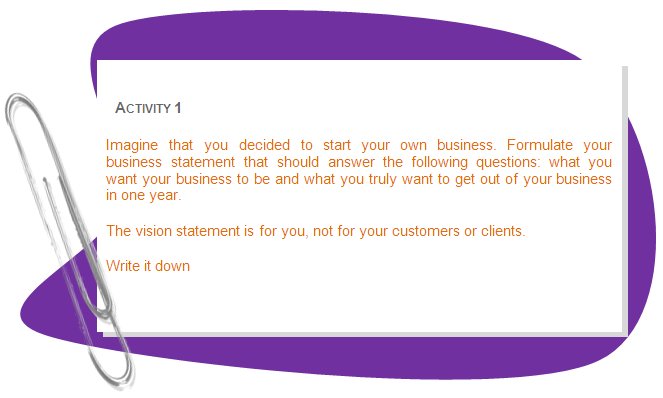
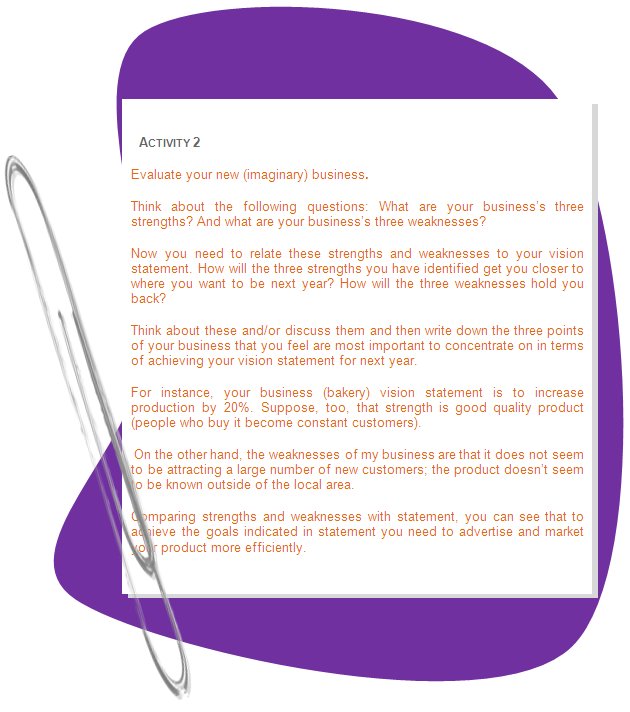
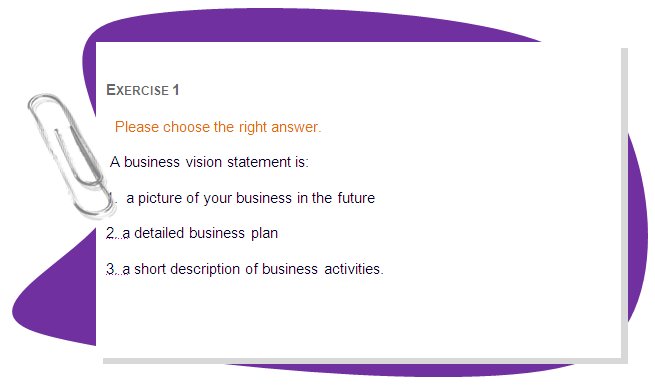
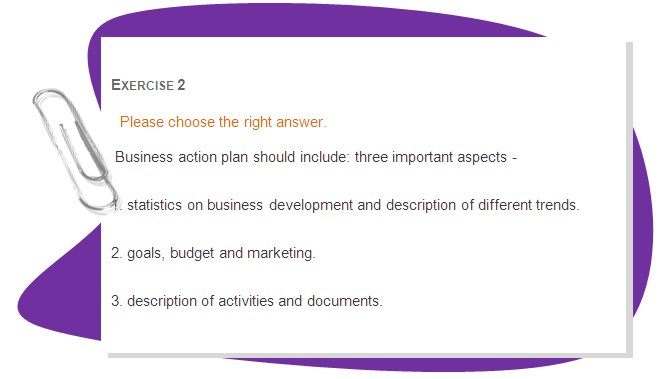
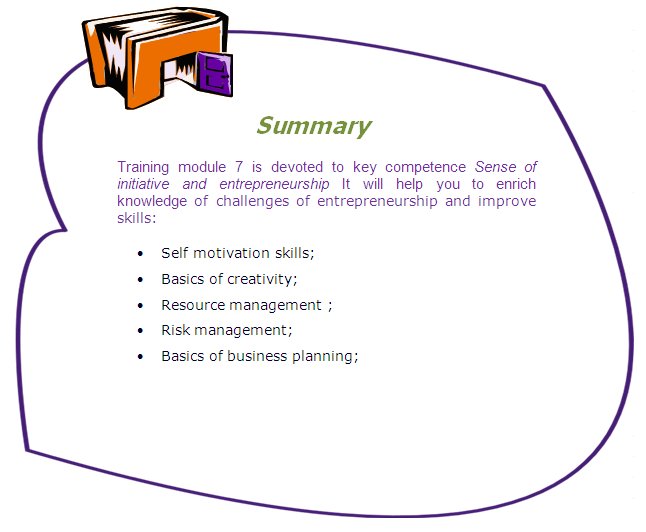
 |
Answers to the questions and exercises of Didactic Unit 6 |
1.
2